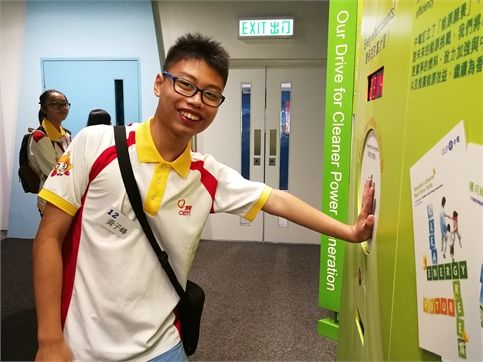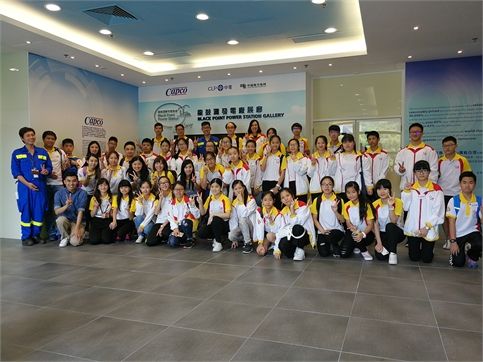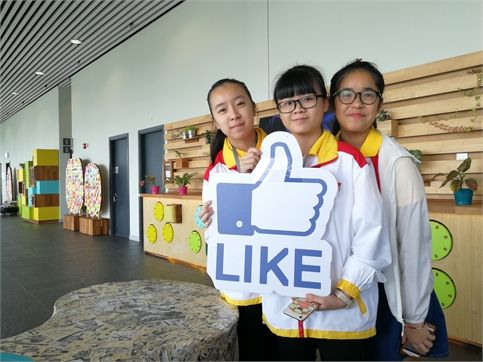
CEM “Power Elites” visit green electric facilities in Hong Kong to expand horizons
Macau, 10 August 2017
Companhia de Electricidade de Macau – CEM, S.A. (CEM) launched the “Power Elites” Training Program last September, aims to improve students’ interests in power energy and help them establish correct energy saving and environmental protection concepts. The Program attracted over 50 Form 1 and Form 2 students from 12 secondary schools to participate.
During the one-year Training Program, students visited Macau, Hong Kong and mainland China to learn about different power supply environment in the three regions to broaden their visions. The first two visits were held in Macau and Guangzhou in January and April, respectively. At CEM, students learned electricity generation process, understand local power generation and the operation of engineers; in Guangzhou, they paid a visit to “Electric Car Experience Center” to view the advanced electric vehicle automatic battery changing system and “Nansha Electric Power Vocational Training Center” to experience a number of electric power training items, understanding the significance of proper use of electricity.
The final visit was held in Hong Kong recently, locations include “CLP Black Point Power Station” and “T-PARK”. “Black Point Power Station” is located in the New Territories region of Hong Kong and started operating in 1996, which is the first power station adopted natural gas to generate electricity in Hong Kong, also one of the world’s largest gas-fired combined-cycle power stations. The use of natural gas for electricity generation can significantly reduce gas emissions to help protect environment.
Another location, “T-PARK”, is a sludge treatment facility and environmental education center built by the Hong Kong SAR Government, with the aim of encouraging positive change in people’s attitudes and behaviors towards waste management, resource recovery and recycling. “T-PARK” adheres to the principle of “waste-to-energy”. Sludge is a thick mud-like by-product of sewage treatment, through advanced incineration technology, the heat energy generated from the process is recovered and turned into electricity that can support the power consumption of “T-PARK”. This not only cuts down the quantity of waste to be disposed of in the landfills dramatically, but it can also implement sustainable development.
As for the visit to Hong Kong, participating students said that Black Point Power Station uses natural gas for power generation, which is eco-friendly and reduce air pollution at the same time. Macau should adopt a more eco-friendly way to generate electricity to reduce carbon emissions, so as to protect the local environment. On the other hand, the overall design of “T-PARK” is fully self-sufficient without external supply of water and electricity. The facility can generate electricity and produce surplus power that can be exported to public power grid to power up 4,000 households. The whole design concept is perfect. The students understand that the implementation of environmental protection can be undertaken on many aspects, from the application of environmental materials, such as energy efficient glass and reclaimed wood, in urban development planning and construction; to starting from the source, make good use of sunlight and natural ventilation as well as afforestation.
 Login
Login


